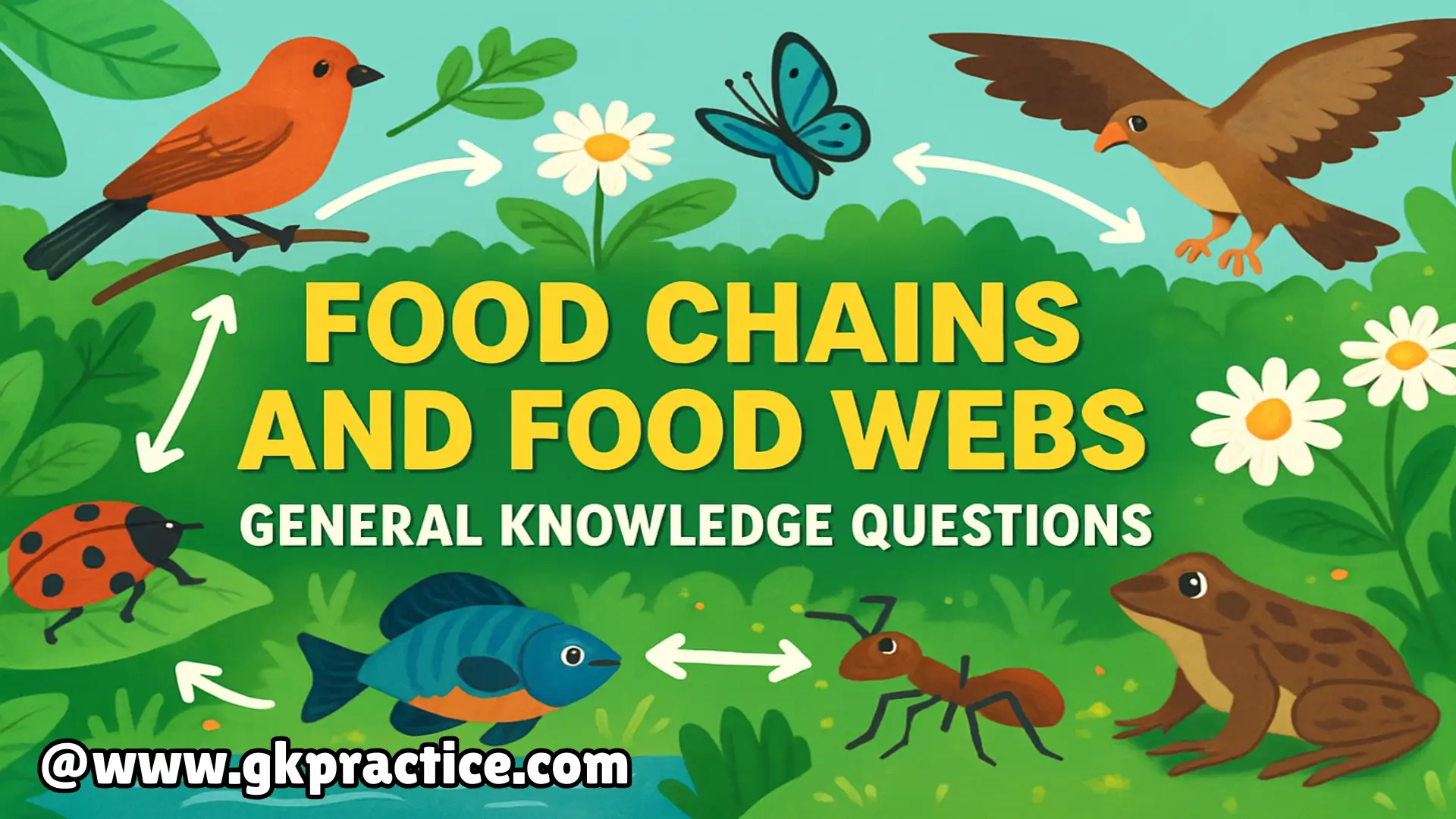A) Sal
B) Teak
C) Bamboo
D) All of the above
Explanation: Sal, teak, and bamboo are major trees in Indian rainforests. They photosynthesize and form the base of the food web, feeding herbivores like elephants and deer, which then sustain predators such as leopards and tigers.
Q32) In the Thar desert, which reptile acts as a predator?
A) Tortoise
B) Sand lizard
C) Monitor lizard
D) Chameleon
Explanation: The Indian monitor lizard is a carnivore in desert ecosystems, preying on insects, birds, and small mammals. As a predator, it maintains ecological balance in the Thar desert by controlling prey populations and contributing to energy transfer.
Q33) What type of consumer is the Indian elephant?
A) Primary consumer
B) Secondary consumer
C) Tertiary consumer
D) Decomposer
Explanation: Elephants feed mainly on grasses, leaves, fruits, and bark, making them herbivorous primary consumers. They play a key role in shaping vegetation, dispersing seeds, and maintaining forest food webs by transferring plant energy to higher trophic levels.
Q34) Which bird controls insect populations in Indian fields?
A) Owl
B) Crow
C) Myna
D) Peacock
Explanation: Mynas feed on insects like grasshoppers and caterpillars, helping control pest populations in agricultural fields. As secondary consumers, they provide ecological services to farmers by reducing crop damage naturally, demonstrating the role of birds in food webs.
Q35) In the Sundarbans, which animal feeds on fish and crabs?
A) Tiger
B) Fishing cat
C) Monkey
D) Crocodile
Explanation: The fishing cat is an important predator in the Sundarbans. It preys on fish, crabs, and amphibians, occupying the tertiary consumer level. It ensures balance between aquatic organisms, showing the strong link between land and water food webs.
Q36) Which organism links detritus food chains with grazing food chains?
A) Termites
B) Earthworms
C) Fungi
D) Ants
Explanation: Earthworms break down detritus and mix it into soil, where it nourishes plants. These plants then form the basis of grazing food chains. Thus, earthworms connect detritus-based and plant-based energy flow in ecosystems, ensuring continuity of nutrient cycles.
Q37) Which carnivore is essential for regulating herbivore numbers in Kaziranga National Park?
A) Rhino
B) Tiger
C) Wild buffalo
D) Elephant
Explanation: Tigers prey on herbivores like deer and wild boars in Kaziranga. By controlling their numbers, tigers prevent overgrazing, which protects vegetation. This regulation maintains ecological balance, making tigers a keystone species in the park’s food web.
Q38) In marine ecosystems of India, which large fish acts as a secondary consumer?
A) Tuna
B) Whale shark
C) Rohu
D) Hilsa
Explanation: Tuna feeds on smaller fish and zooplankton, placing it at the secondary consumer level. It is then hunted by sharks and humans, forming an important link in marine food webs. Tuna fisheries also sustain livelihoods along India’s coasts.
Q39) Which desert animal feeds on cactus fruits, acting as a primary consumer?
A) Camel
B) Jackal
C) Lizard
D) Snake
Explanation: Camels eat cactus fruits and other desert vegetation, making them herbivorous primary consumers. Their ability to digest tough desert plants allows them to survive in harsh ecosystems, while also transferring plant energy to carnivores like jackals and humans.
Q40) Which scavenger bird is declining in India due to diclofenac poisoning?
A) Crow
B) Eagle
C) Vulture
D) Kite
Explanation: Vultures feed on carcasses and act as natural cleaners. Diclofenac, a veterinary drug, caused their massive decline, disrupting scavenger food chains. This decline increased disease risks from decaying carcasses, showing how one species loss can affect entire food webs.







